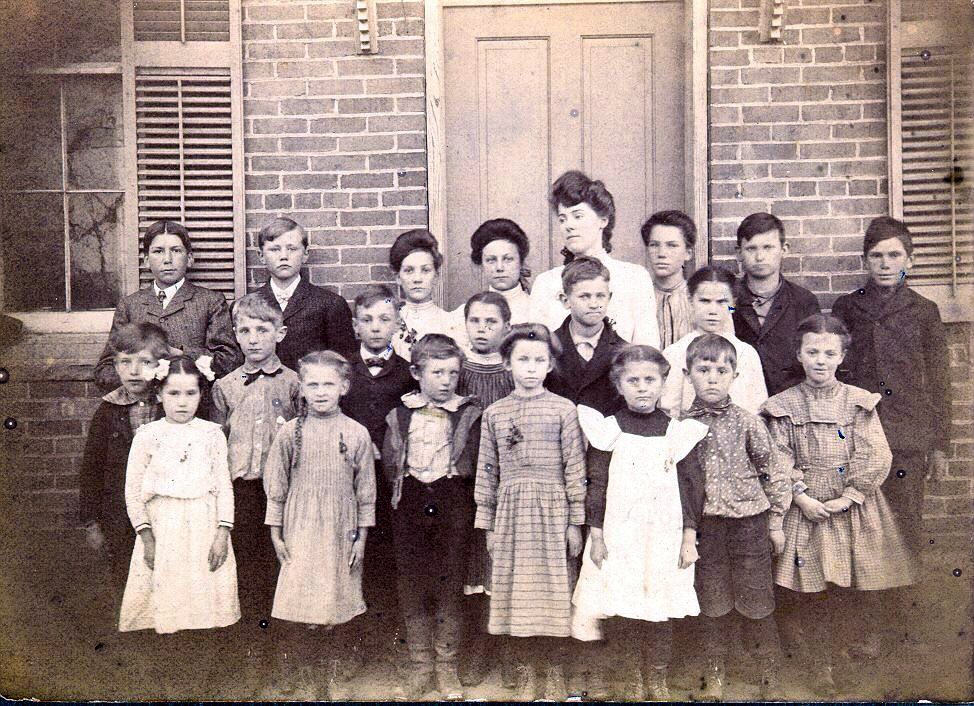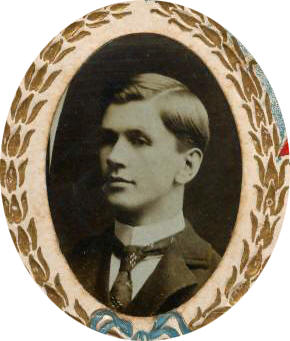| Because You Asked . . . . | ||||
|
|
||||
|
Sinkey School on Ross Road
at Dent Road Back Row left to right: Earl
Downey, Will Clark, ?, ?, ?, ?, ?, Vinel Walker |
||||
| One Room Schools Dotted Countryside | ||||
|
The earliest settlers made do by teaching children in a home, shed or any building until schoolhouses were built. The first schools in our community were primitive subscription schools erected by volunteer labor. Logs cut 16' or 18' lengths were used for the construction. Broad boards composed the roof. Each had a fireplace, a clapboard door. If there was a window it was probably greased paper to let in light. Students benches were fashioned from trees. A subscription of $1.00 to $3.50 per child was paid for a 3 month period. Teachers boarded with the families. Readers consisted of The New Testament or Old English Reader. Grammar was rarely taught. In 1853, Ohio revised it’s education system by law forming a Township Board of Education for each township. These boards consisted of one representative of each sub-district school and the clerk of the township. This group was invested with the title, care and custody of all school property. They appropriated the money among the sub-districts, determined what text books were to be used, fixed the boundaries of the districts and located school sites. They reported to the County Auditor annually. City and incorporated villages acted as their own sub-district. When I was young, my grandfather, Oatfield Whitney, used to tell me "You children have it so easy. When I was your age I used to walk to school." I knew he lived on Whitney Road which is now Longshore Road so I thought he had a very long walk to Sunbury school. Not So. Each sub-district (usually 6-10 per township) had a school so children did not walk more than a mile or two to school. Each had a local board of directors who controlled the schools. They enumerated the children of school age, employed and dismissed teachers, made contracts for the building, and furnishings of the schools. The state bill also eliminated the rate-bills and made education free to all youths in the state. Thus one room schools began to replace the primitive schools. Typically these structures were 22' by 36' from outside to outside . Usually they were brick with more than one window to provide light. Each had one door, a chimney (usually for stove) and generally a blackboard as well as benches and tables or desks. Teachers still boarded with families in the district and moved monthly to share the burden among all the homes. Teachers arrived early enough to heat the building before the students arrived and made sure all was kept clean. Sub-Division #2 of Berkshire Township adopted the following rules on the 29th of August 1873 for the government of the school. |
||||
| 1. |
No person afflicted with any contagious disease shall be permitted to attend school. |
|||
| 2. |
It shall be the duty of the teacher to protect the school property from injury or defacement: to prevent all unnecessary talking during school hours; to prevent pupils from rising or leaving seats without permission; to prevent all running and boisterous play within the school house; to prevent the use of profane or immoral language by pupils; and to prevent pupils from indulging in any immoral conduct whatever. |
|||
| 3. |
Should any pupil refuse to obey any of the rules of the school, it shall be the duty of the teacher to inform the directors of such refusal forthwith, and it shall be the duty of the directors to expel from the school, for the remainder of the current term, all pupils who refuse to comply with the rules. |
|||
| 4. | The following textbooks shall be used, and no
other, in the school to wit:
|
|||
| 5. | The sexes shall have separate recesses | |||
|
Attendance was spotty. Boys often missed school to work on the farm. My father-in-law was one of four boys but there was only one pair of shoes so the boys took turns going to school. The late Essa Willison told of going to a one room school via walking through her father’s farm, over a fence, across the neighbor’s farm and then down the road to school. In bad weather the neighbor would take the children on to school by horse and wagon. During one heavy snow, the children got from school to the neighbor's but the roads were impassible so six year old Essa spent two nights at the neighbor’s before her father could get to her. Without phones, this would have been very scary. These schools provided education for the elementary age children only. High school students attended the centralize schools in Center Village, Galena or Sunbury. Often families moved to town so their children could have school advantages. Others had their children stay in town at a friend’s or board in a rented room. Thanks to Anita Hartsook Robinson and her booklet, A History of the Big Walnut Local Schools, Phyllis Davidson for early Harlem Township photos, and Maxine Longshore for Vans Valley School photos. |
||||
| Photos of Early Schools: |
Click on Photo to Enlarge |
|||
| Harlem Township | ||||
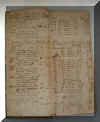 |
 |
 |
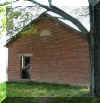 |
|
| Hunt School Sub-District 4 SW Center Village Road and Green Cook Road Hunt Classes 1905-06 |
Harlem Township Pupil List | Feazel
School, Miller School and Biggs School Built in 1855 Harlem Township Sub-District No. 7 Green Cook and Lewis Road |
||
|
Fix School #5 1920 Fred Green Teacher |
Harlem Township Schools 12-1920 |
|||
|
|
|
|||
| Trenton Township Schools | ||||
| Vans Valley Sub-District 605 South of St. Rt. 37 | ||||
|
|
|
|
|

|
| 1901 | 1903 | 1904 | 1926-7 | |
|
Perfect School |
South Condit | Township- School House | Wilson | |
 |
|
|||
|
North Old CCC |
South Condit 1886 |
Hartford Road 2008 Polly Horn, Photo |
St. Rt. 37 Paul Clay's Picture |
|
|
Ross Road School |
||||
|
|
 |
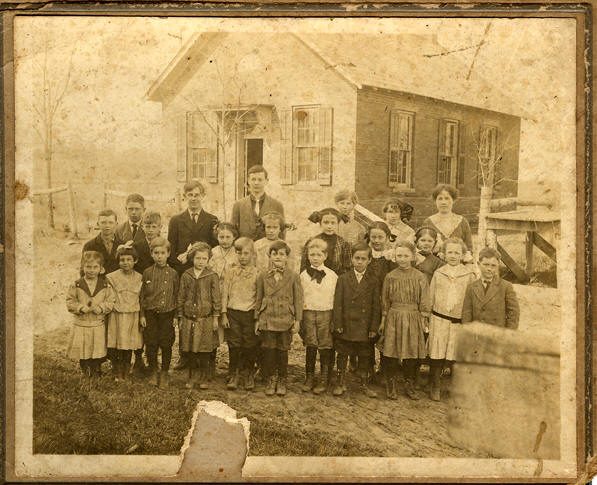 |
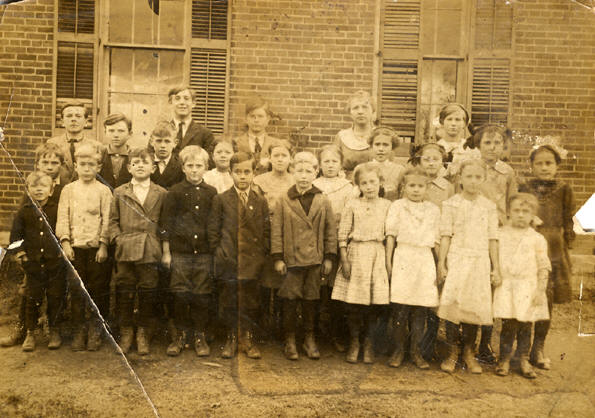 |
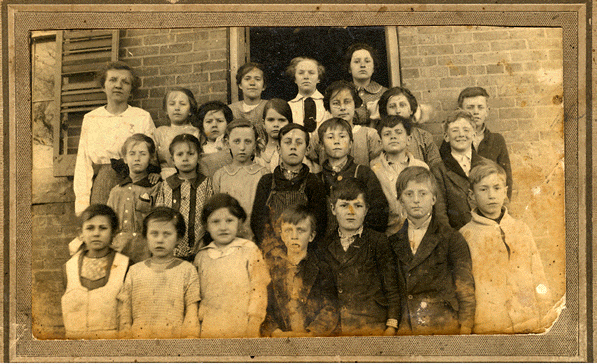 |
|
photos 2003 by Janet MacKenzie |
1907 | 1913 | 1914 | 1915 |
|
Ross Road School |
Berkshire | |||
 |
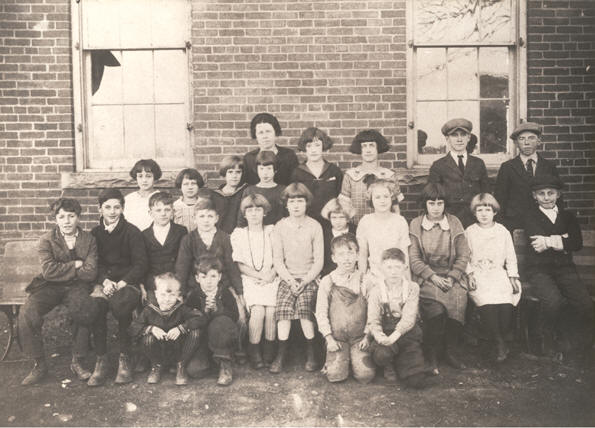 |
 |
||
|
1916 |
1925-5
|
James Rose, teacher
of West Galena School in Sun District #6 |
Fontenelle School
on Berkshire Road |
1894 |
|
Genoa |
Porter |
Unknown Schools |
||
 |
 |
|
|
|
|
District No. 4 |
Stone Jug School |
|||
|
. . . .And Now You
Know
|
||||
| Goto Local History Index |
(10/17/2016 ) |
|||
